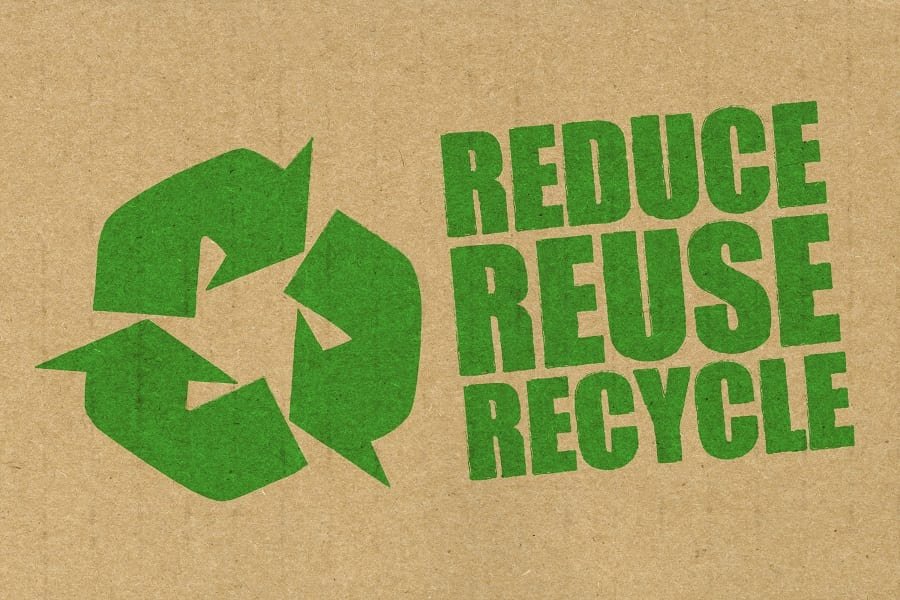Written by Sarah Sha
Have you ever heard of climate change? If you haven’t, here’s the definition: climate change is a change in global or regional climate patterns. These changes can have harsh consequences. For example, they can cause intense heat waves, droughts, and damage ecosystems across the globe. Pretty scary stuff! But don’t worry, there are plenty of things we can do to help. Even just unplugging the cords for your phone or computer when they aren’t in use is a way to help fight against climate change! Let’s take a look at some other ways to help create a greener, healthier planet!
10 Ways You Can Help the Environment
1) Reduce, Reuse, Recycle
Reducing - Try to reduce your own waste! You can do this by avoiding one-time-use plastics (bags, containers, bottles, etc.), donating old clothes, and shopping at your local farmer’s market!
Reusing - Reuse the things that you can! Shop secondhand at thrift stores or flea markets, and if you already have some one-time-use plastic materials at home, try to repurpose them for something else. For example, you could use old plastic containers to store food or other items!
Recycling - Make sure you recycle correctly! Always be sure that your recyclable items are empty, clean, and dry before you toss them in the recycling bin. Some examples of things you can recycle are aluminum and metal cans, paper, glass (not in all areas), cardboard, and certain plastics! If you’re not sure if something is recyclable or not, check out this link: epa.gov
2) Shorten Your Shower
Be mindful of the time you spend in the shower! Just two minutes off of your everyday shower could save almost ten gallons of water! Even a really small change can make a big difference. Also, remember not to keep the sink running while you brush your teeth!
3) Carpool
Carpooling and public transportation are great alternatives to cars if they’re an option for you! Shared rides cut down on greenhouse gas emissions, carbon emissions, and noise pollution! It can also be a great way to save a little bit of money.
5) Go Biking
In the same vein as carpooling, ride a bike or take a walk instead of driving short distances! Just a moderate increase in bike riding is projected to save around 6 to 14 million tons of CO2!
5) Don’t Waste Food
Only buy what you need, and eat what you buy! When food is wasted, a lot of the energy and resources put into the production, transportation, and disposal process are wasted. If you do end up buying too much food, try to donate it to your local food pantry. You could also compost it, which we’ll touch on later. Shopping at your local farmer’s market can also help by cutting down fossil fuel pollution!
6) Use Clotheslines to Dry Your Clothes
Drying clothes in the sun can help you save electricity and money. With frequent use, dryers can use up a lot of energy, creating thousands of CO2 emissions each year. Opt for a clothesline instead! Fun fact: the sun can help to kill bacteria in your clothes!
7) Avoid Beef
Did you know that giving up beef could reduce your carbon footprint more than giving up cars? Reducing your meat consumption is a great way to help prevent water scarcity. Just avoiding a burger here and there can have a huge impact!
8) Make a Compost Pile
Got too much food? Make a compost pile in your backyard! It’s easier than you think— here’s a tool to help get you started: EPA Guide to Home Composting
You can also even compost in your apartment or home; learn how here
9) Shop Sustainably
Try to be mindful of where and what you buy! Avoid plastic bags when shopping, and opt for reusable ones instead. Shopping in bulk, if possible, and shopping online can also have a lower environmental impact. Otherwise, local stores, farmer’s markets, and secondhand shops are all great options!
10) Garden at Home
Finally, what if you created a garden right in your very own backyard! There are so many benefits to at-home gardening. First, you can create some of your own food sources by planting fruits and vegetables, while at the same time fighting against global warming. Planting flowers, trees, or shrubs helps to take in CO2. Although it may be just a little bit, every bit counts. Gardening also helps to improve air and soil quality, and it can be very fun! Here’s a guide to at-home gardening, check it out! Beginning Home Gardening Guide
Looking for more resources to empower and inspire your young scientist? Check out our workbook full of exciting science experiments and empowering activities!
Learn more and purchase today!



